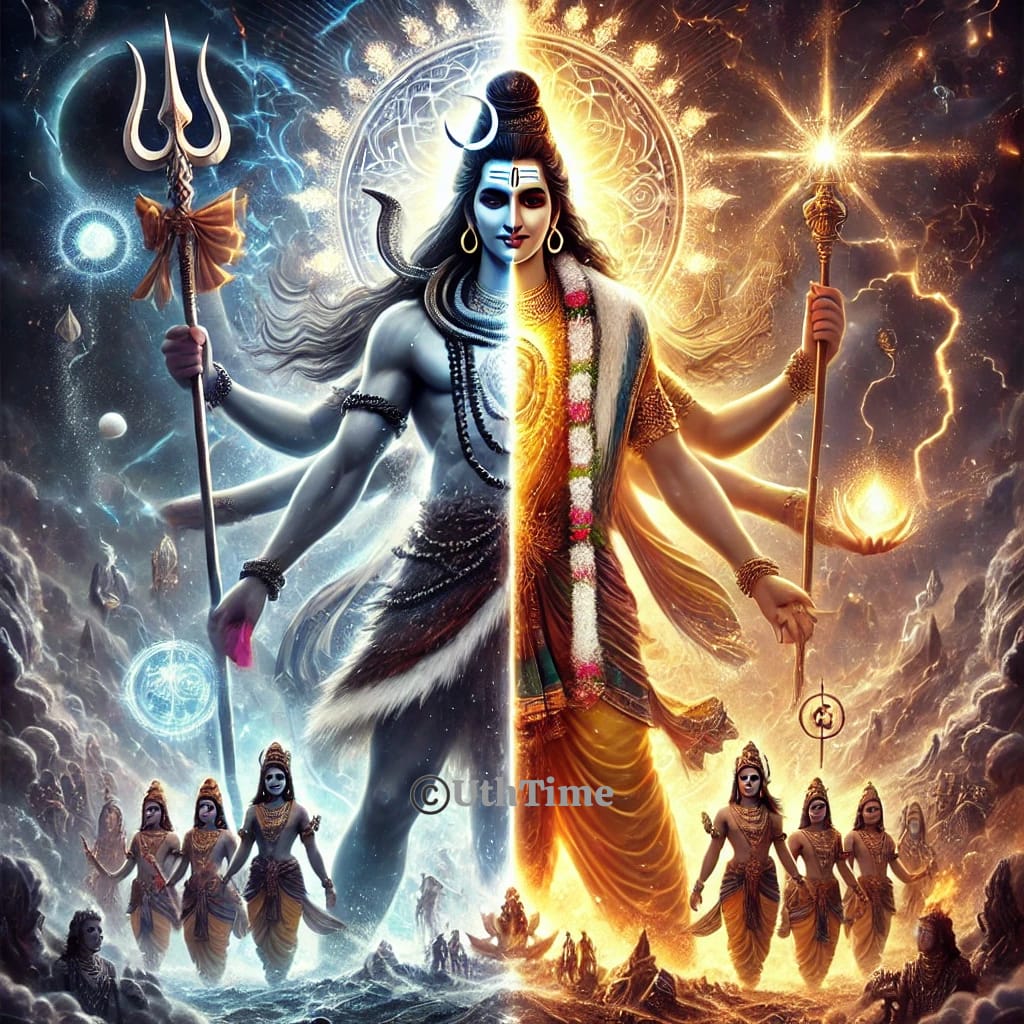In Hindu itihaas, a notable encounter between Bhagwan Shiva and Bhagwan Krishna unfolds during the tale of Banasura, an asura king and devout follower of Shiva.
Banasura, endowed with a thousand arms and immense power through Shiva’s boon, became arrogant and sought worthy opponents for battle.
His daughter, Usha, fell in love with Aniruddha, Krishna’s grandson, leading to Aniruddha’s captivity in Banasura’s city, Shonitapura. Upon learning of his grandson’s predicament, Krishna, accompanied by his brother Balarama and a formidable army, marched to Shonitapura to rescue Aniruddha.
Banasura, relying on Bhagwan Shiva’s protection, confronted Krishna. A fierce battle ensued, with Shiva and his son Kartikeya supporting Banasura against Krishna and his forces. The clash was intense, with both deities deploying divine weapons and exhibiting extraordinary prowess.

During the confrontation, Krishna employed the ‘Jrimbhanastra,’ a weapon that induced drowsiness, causing Shiva to momentarily withdraw from the battle.
Seizing this opportunity, Krishna used his Sudarshana Chakra to sever Banasura’s numerous arms, thereby subduing him.
When Shiva awoke, he acknowledged Krishna’s supremacy and pleaded for Banasura’s life, citing his devotion.
Krishna, honoring Shiva’s request, spared Banasura, leaving him with four arms, and granted him immortality. This act not only humbled Banasura but also reinforced the principles of duty and cosmic balance.
This narrative exemplifies the harmonious interplay between deities in Hindu tradition, where duty and devotion guide actions, and cosmic equilibrium is maintained through divine interventions.
For a visual depiction of this epic encounter, you might find the following video insightful:
